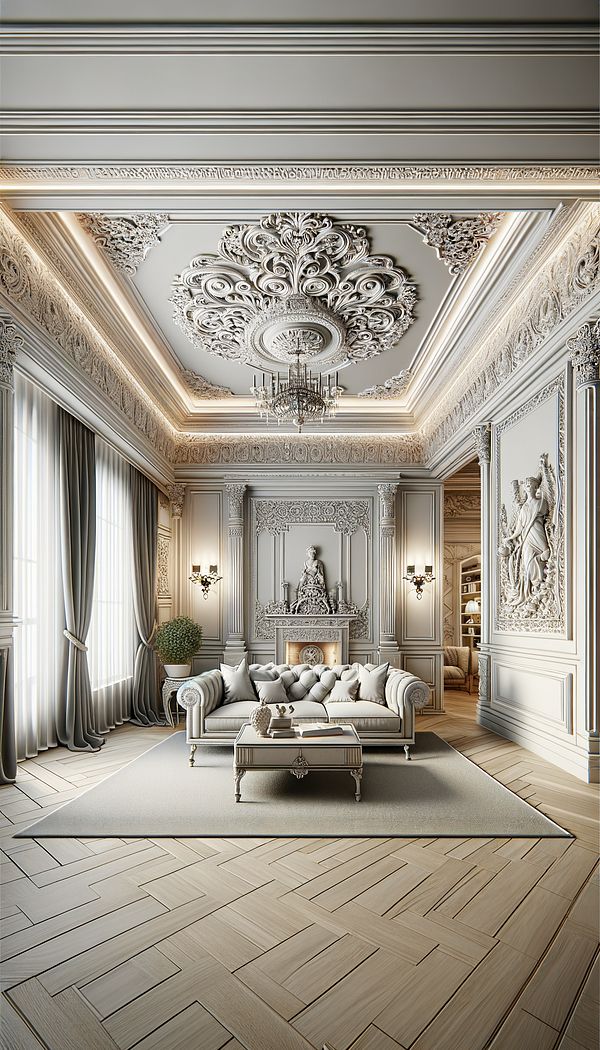What is Molding?
Molding is the use of decorative strips to enhance architectural features and spaces.
Description
Molding, in the realm of interior design, transcends purely functional elements to become essential components of a space's aesthetic and feel. Often crafted from wood, plaster, or polymer materials, these decorative strips are applied to walls, ceilings, floors, and frames to add style and character. Molding variations are vast, ranging from simplistic designs that gracefully outline a room's perimeter to elaborate motifs that draw the eye and command attention.
The application of molding is a testament to the careful thought and craftsmanship bestowed upon spaces. It can subtly elevate a design by adding depth and dimension, or it can make a bold statement with intricate patterns and textures. Beyond aesthetics, molding plays a role in disguising imperfections and creating a seamless transition between different surfaces.
In today's design landscape, the choice of molding style can greatly influence the overall theme and emotion of a space. From the classic elegance of crown molding to the modern sleekness of flat-panel designs, the style selected can resonate with historical periods or the cutting-edge of contemporary design. As such, understanding and selecting the right molding is akin to curating an art collection—each piece contributes to the spatial narrative, enhancing the harmony and beauty of the interior.
Usage
Molding is commonly found adorning the edges of ceilings (crown molding), framing doorways and windows, or as baseboards that line the bottom of walls. In more elaborate settings, it may also include wainscoting, panel moldings, and chair rails which divide walls aesthetically or protect them from damage.
FAQs
-
What materials are commonly used for molding?
Wood, plaster, and modern polymers are popular materials for molding, each offering different aesthetic and functional benefits.
-
How does molding enhance interior design?
Molding adds depth, dimension, and character to spaces, accentuating architectural features and enabling a seamless transition between surfaces.
-
Can molding be used in modern interiors?
Absolutely. While molding is often associated with traditional decor, contemporary designs increasingly incorporate sleek, minimalist molding options to complement modern aesthetics.
Practical Application
When incorporating molding into your design, consider the existing architectural features and the desired aesthetic of the space. Combining different types of molding (e.g., crown and baseboard) can unify a room, but ensure that styles and scales harmonize. For a cohesive look, choose moldings that complement both the interior's color scheme and the overall design style. Lastly, proper installation is key; even the most beautiful molding won't shine if it's not correctly fitted or finished.
-
Architectural Elements199 articles
-
Design Styles478 articles
-
Wall Treatments & Finishes157 articles
-
Historical Periods & Movements150 articles
-
Decorating Principles & Elements330 articles
-
Accessory Dwelling UnitAn Accessory Dwelling Unit (ADU) is a secondary housing unit on a single residential lot.
-
Complementary ColorsComplementary colors are pairs of colors that, when combined, cancel each other out to produce a grayscale color like white or black.
-
Drum DyeingDrum dyeing is a leather coloring process where hides are tumbled in a rotating drum with dye solutions.
-
ReturnIn interior design, return refers to a detail where a material or element wraps around a corner or edge, creating a continuous look.
-
Barrel ChairA barrel chair is a type of armchair that features a semi-circular back that resembles the shape of a barrel.
